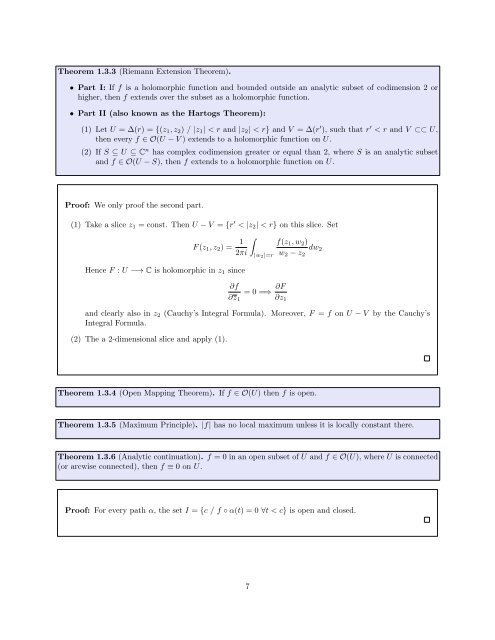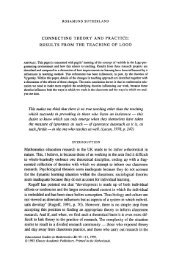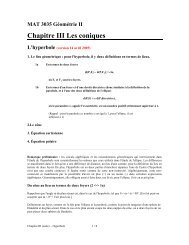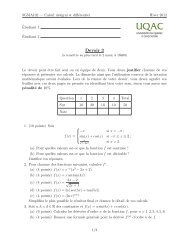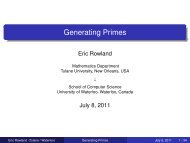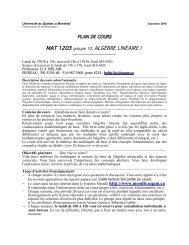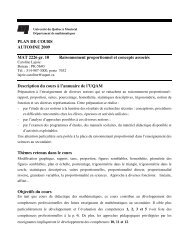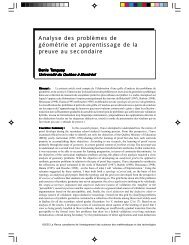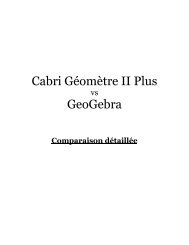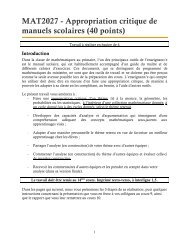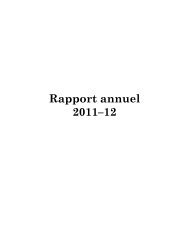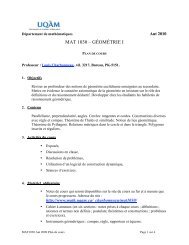COMPLEX GEOMETRY Course notes
COMPLEX GEOMETRY Course notes
COMPLEX GEOMETRY Course notes
You also want an ePaper? Increase the reach of your titles
YUMPU automatically turns print PDFs into web optimized ePapers that Google loves.
Theorem 1.3.3 (Riemann Extension Theorem).<br />
• Part I: If f is a holomorphic function and bounded outside an analytic subset of codimension 2 or<br />
higher, then f extends over the subset as a holomorphic function.<br />
• Part II (also known as the Hartogs Theorem):<br />
(1) Let U = ∆(r) = {(z 1 , z 2 ) / |z 1 | < r and |z 2 | < r} and V = ∆(r ′ ), such that r ′ < r and V ⊂⊂ U,<br />
then every f ∈ O(U − V ) extends to a holomorphic function on U.<br />
(2) If S ⊆ U ⊆ C n has complex codimension greater or equal than 2, where S is an analytic subset<br />
and f ∈ O(U − S), then f extends to a holomorphic function on U.<br />
Proof: We only proof the second part.<br />
(1) Take a slice z 1 = const. Then U − V = {r ′ < |z 2 | < r} on this slice. Set<br />
F (z 1 , z 2 ) = 1 ∫<br />
f(z 1 , w 2 )<br />
dw 2<br />
2πi |w 2|=r w 2 − z 2<br />
Hence F : U −→ C is holomorphic in z 1 since<br />
∂f<br />
= 0 =⇒ ∂F<br />
∂z 1 ∂z 1<br />
and clearly also in z 2 (Cauchy’s Integral Formula). Moreover, F = f on U − V by the Cauchy’s<br />
Integral Formula.<br />
(2) The a 2-dimensional slice and apply (1).<br />
Theorem 1.3.4 (Open Mapping Theorem). If f ∈ O(U) then f is open.<br />
Theorem 1.3.5 (Maximum Principle). |f| has no local maximum unless it is locally constant there.<br />
Theorem 1.3.6 (Analytic continuation). f = 0 in an open subset of U and f ∈ O(U), where U is connected<br />
(or arcwise connected), then f ≡ 0 on U.<br />
Proof: For every path α, the set I = {c / f ◦ α(t) = 0 ∀t < c} is open and closed.<br />
7


